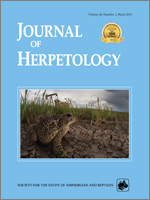Stream ecosystems are particularly sensitive to urbanization, and tolerance of water-quality parameters is likely important to population persistence of stream salamanders. Forecasted climate and landscape changes may lead to significant changes in stream flow, chemical composition, and temperatures in coming decades. Protected areas where landscape alterations are minimized will therefore become increasingly important for salamander populations. We surveyed 29 streams at three national parks in the highly urbanized greater metropolitan area of Washington, DC. We investigated relationships among water-quality variables and occupancy of three species of stream salamanders (Desmognathus fuscus, Eurycea bislineata, and Pseudotriton ruber). With the use of a set of site-occupancy models, and accounting for imperfect detection, we found that stream-water temperature limits salamander occupancy. There was substantial uncertainty about the effects of the other water-quality variables, although both specific conductance (SC) and pH were included in competitive models. Our estimates of occupancy suggest that temperature, SC, and pH have some importance in structuring stream salamander distribution.
How to translate text using browser tools
1 March 2014
Stream-Water Temperature Limits Occupancy of Salamanders in Mid-Atlantic Protected Areas
Evan H. Campbell Grant,
Amber N. M. Wiewel,
Karen C. Rice
ACCESS THE FULL ARTICLE

Journal of Herpetology
Vol. 48 • No. 1
March 2014
Vol. 48 • No. 1
March 2014




